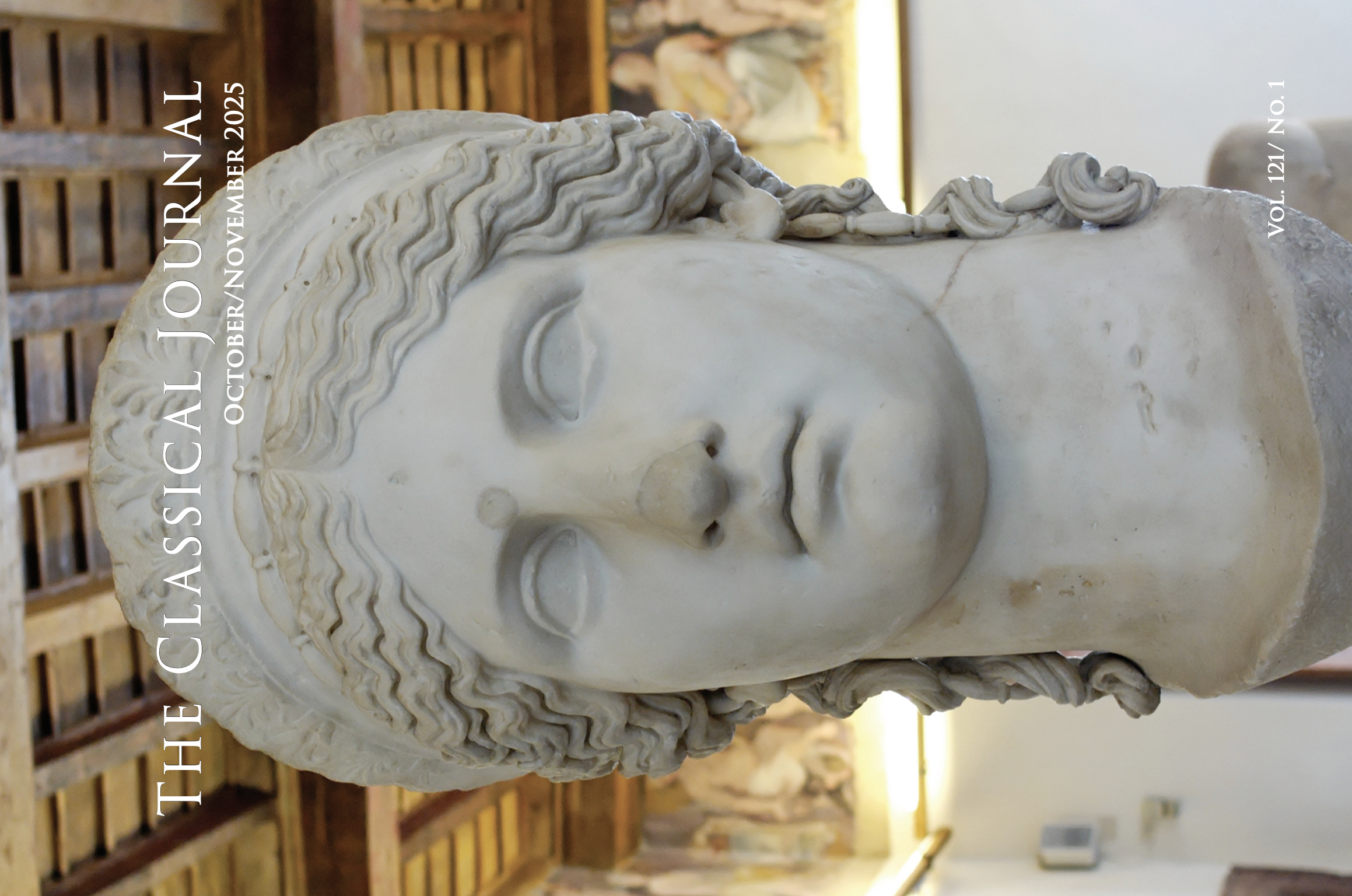The following articles are contained in CJ
109.3
Abstracts of Articles
PRESENCE AND THE FUTURE TENSE IN HORACE'S ODES
Horace is sometimes said to profess in the Odes a “poetics of presence,” a philosophical or
aesthetic orientation that privileges the here and now. This article examines how such an orientation
toward the present might interact with the poet’s use of the future tense and especially with those
future verbs that seem to postpone focal events. It is concluded that the Odes’ many gestures toward the
future, from simple imperatives to the postponement of entire symposia, serve to problematize presence
and to dramatize, in concert with other features of the collection, the anxious feeling that time is
moving too quickly.
DIDACTIC HELEN: OVID’S PRAECEPTRIX AND EURPIDEAN PROTO-ELEGY
Victim, agitator, seductress, lover, beloved—Helen has played every one of these roles.
One under-studied role, however, is Helen as praeceptrix amoris, the erudite teacher of the arts of love.
Ovid, well known for purportedly being the masculine version of this title, constructs Helen in his image
in Heroides 17 especially. Yet Ovid is not the only author who fashions Helen as an alter ego; Euripides
creates the lead character in the Helen as a female version of his own role as creator and potentially even
a “director” of the stage-action. Each of these Helens has a similar purpose: she must teach her lover how
to behave more appropriately in the service of love.
SALE FOR THE PURPOSE OF FREEDOM: SLAVE-PROSTITUTES AND MANUMISSION IN ANCIENT GREECE
In this article, I argue that a secular form of manumission existed in classical Greece that was in many
ways akin to the (better-attested) institution of sacral fictive sale. In the latter form of manumission,
slaves were freed by being “sold” to a god, who made no use of his right of ownership; in the former,
the third-party “buyer” was not divine but human. I then demonstrate that secular fictive sale was of
particular use to slave-prostitutes, especially hetairai, due to their access to a number of potential
“buyers”—namely, their past and present clients.
Lucan’s Militia Amoris: Elegiac Expectations in the Bellum Civile
Lucan’s epic depicts the displacement of the elegiac notion of militia amoris by bellum civile
through his use of elegiac allusions and topoi. Specifically, Julia's ghost is parallel to Cynthia's
ghost in Propertius 4.7; the description of Erictho draws on the thumbnail sketches of witches in
elegy; Cleopatra is portrayed as a meretrix who follows Ovid’s advice in Ars Amatoria 3; Cornelia
is depicted as one of the abandoned heroines; and Pompey is cast as an elegiac lover. In each case,
however, Lucan frustrates expectations by negating or inverting the elegiac passage or topos: the
civil war thus disturbs even the apolitical world of elegy.
HOW TO KILL A ROMAN VILLAIN: THE DEATHS OF QUINTUS PLEMINIUS
While he was Scipio’s legate in Locri Epizephyrii from 205 to 204 bce, Quintus Pleminius plundered the
local sanctuary of Proserpina. His actions and their aftermath prompt Diodorus Siculus, Livy and Valerius
Maximus to create several incompatible death scenes for him that reflect the gravity of his crime. Since
Pleminius is a minor character in the Second Punic War, he is a virtual historiographical blank slate. We
can therefore observe how authors work with stock characteristics and comparisons to fashion a villain and
give him a death that is appropriate for the narrative context.


